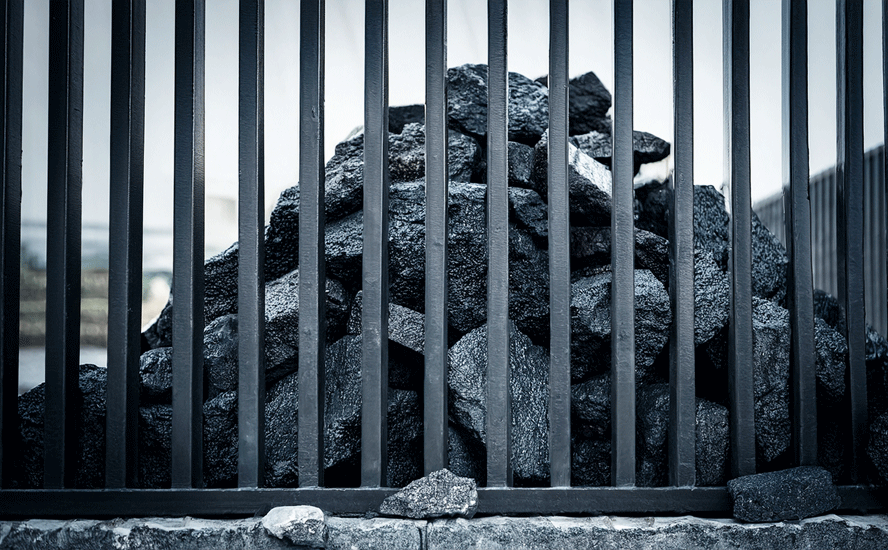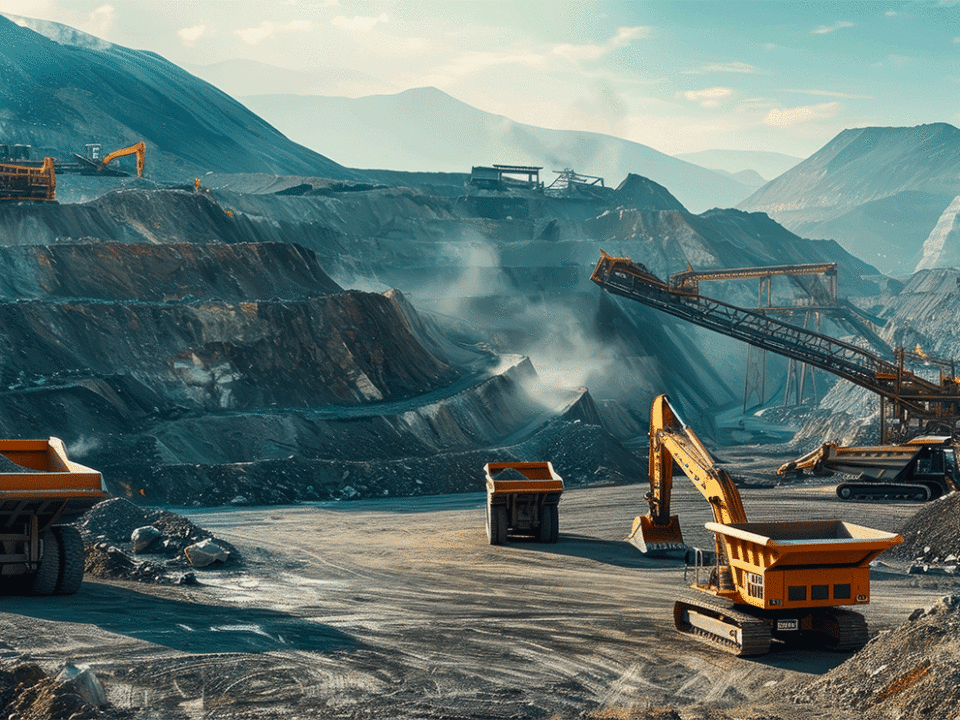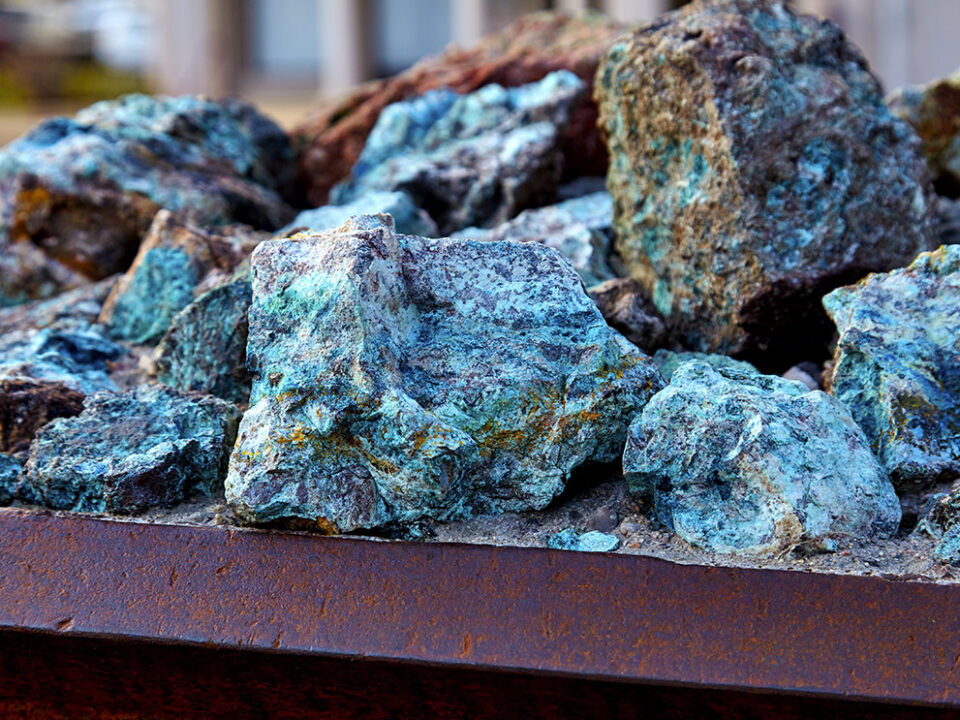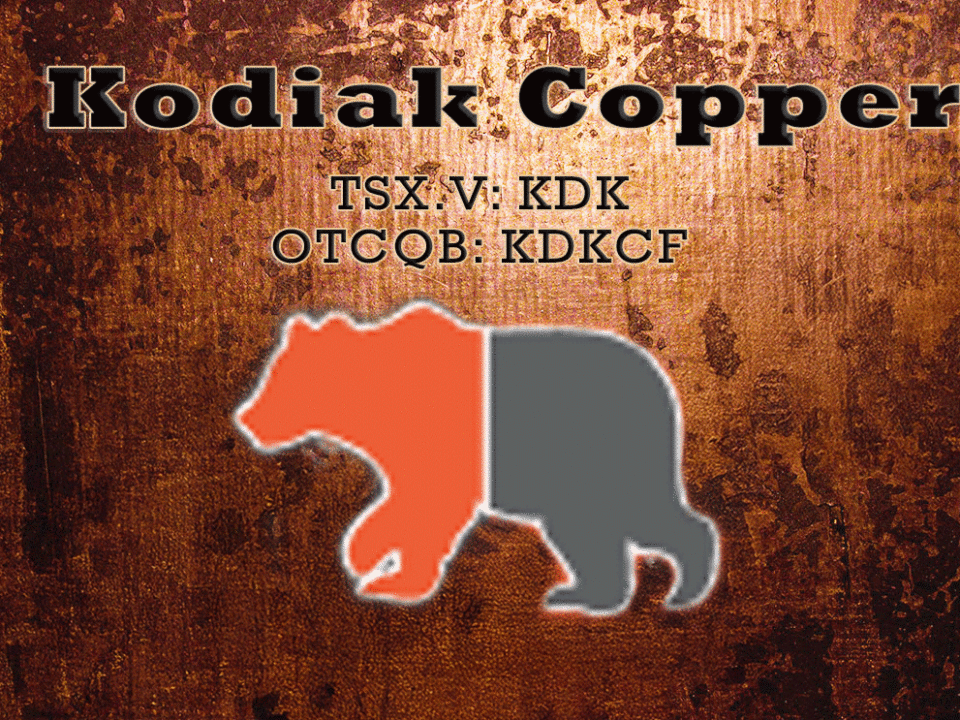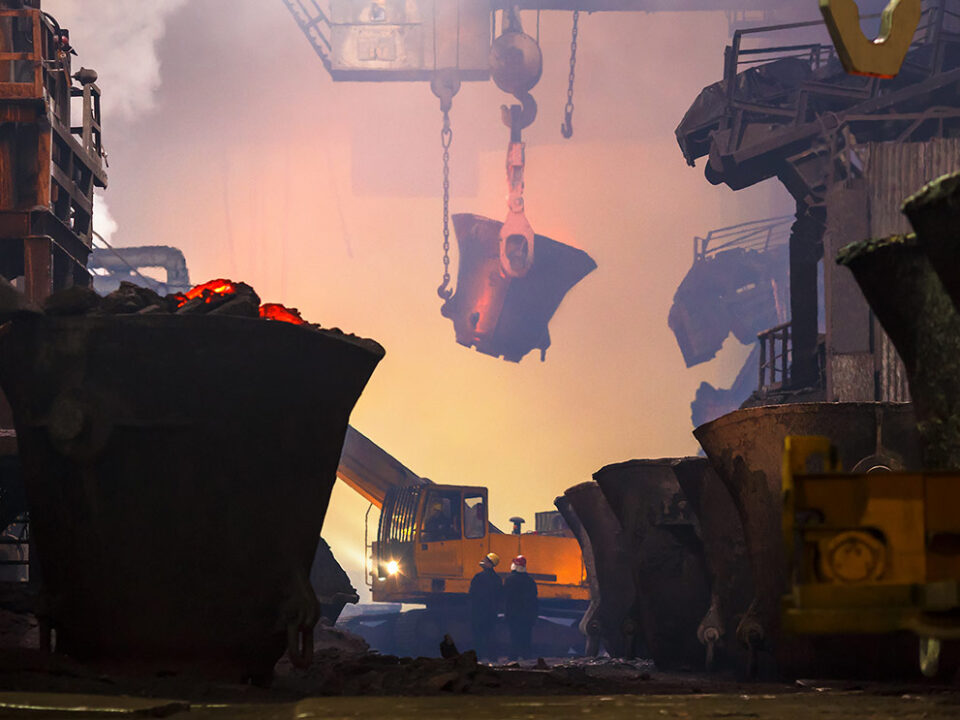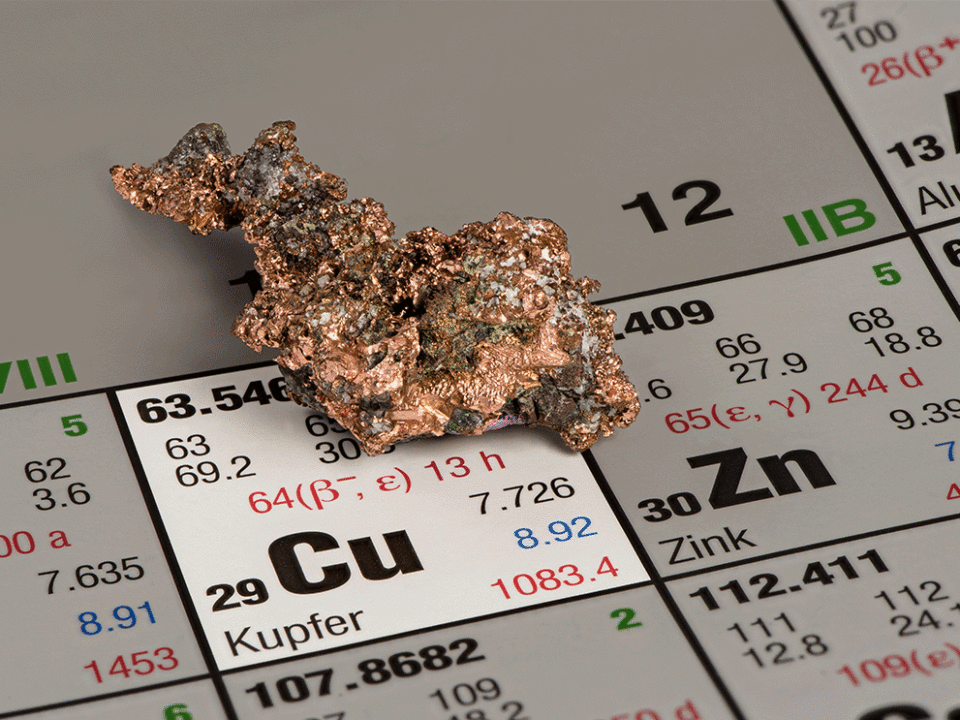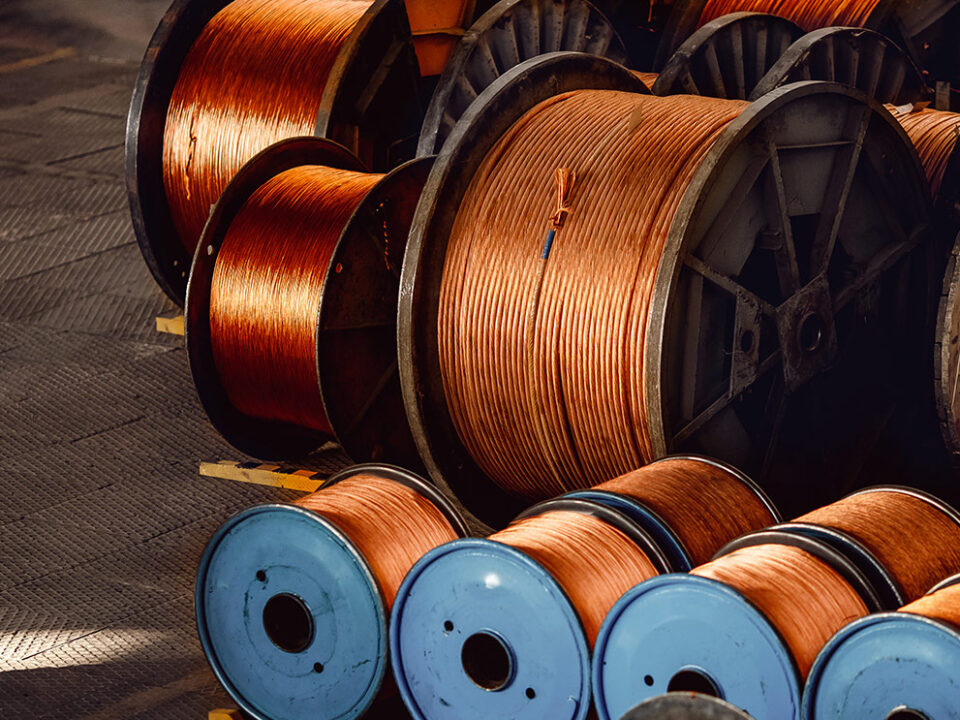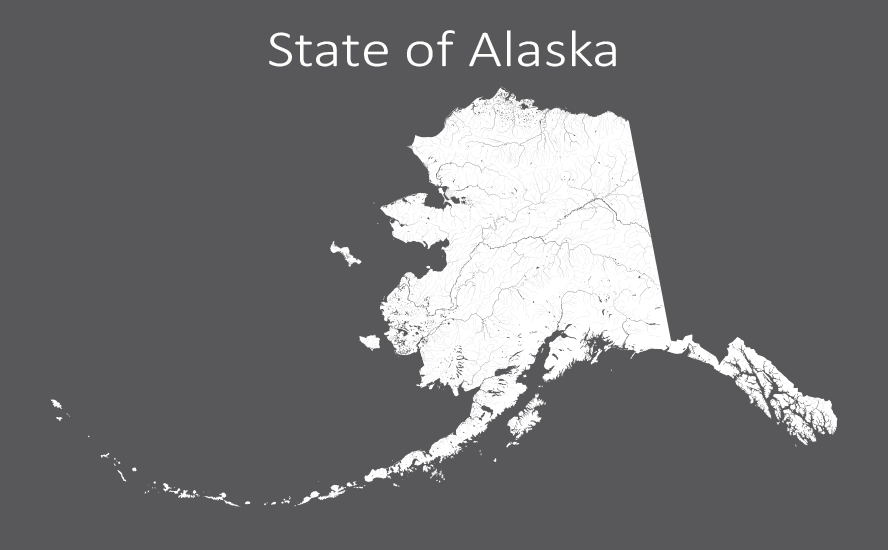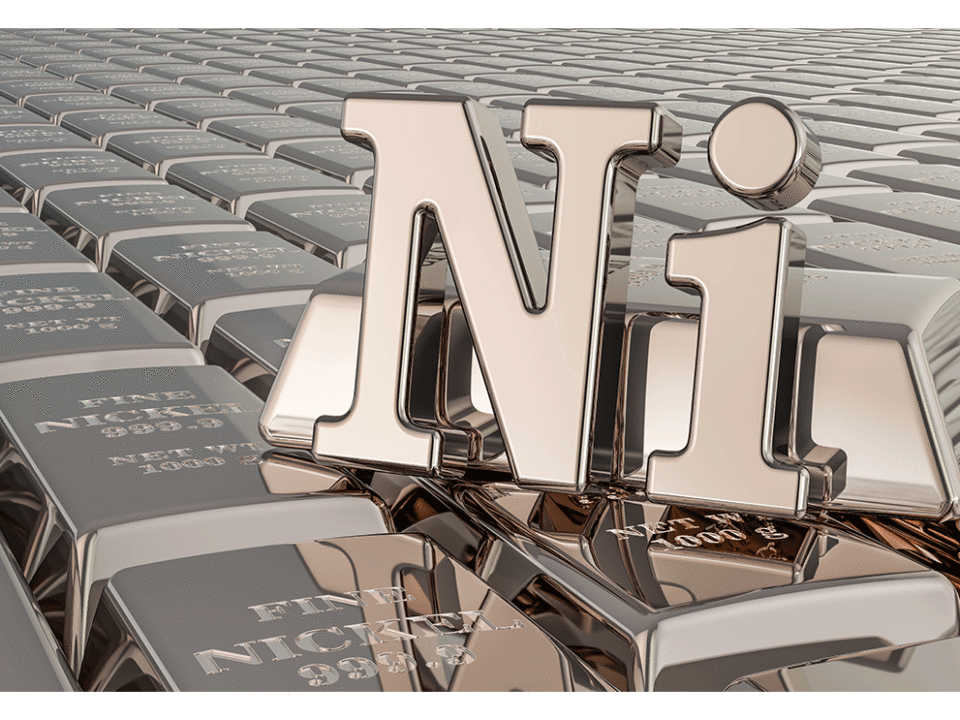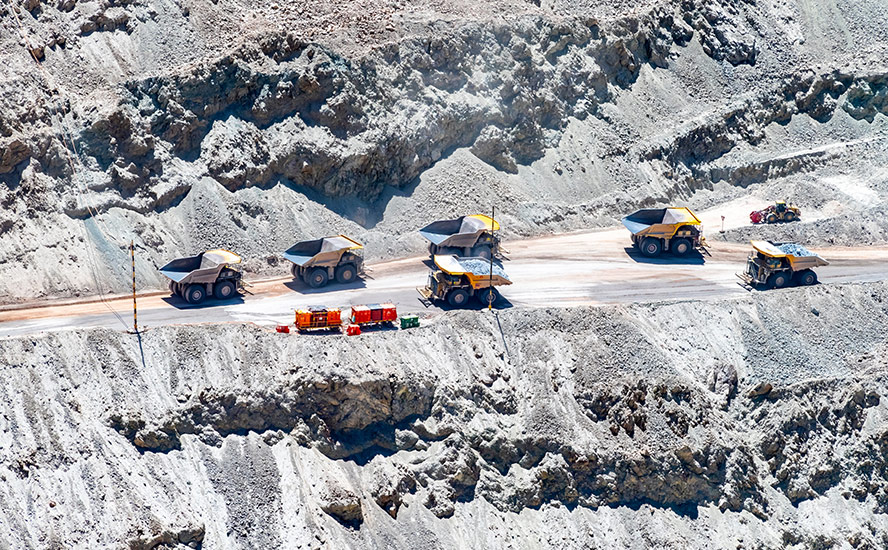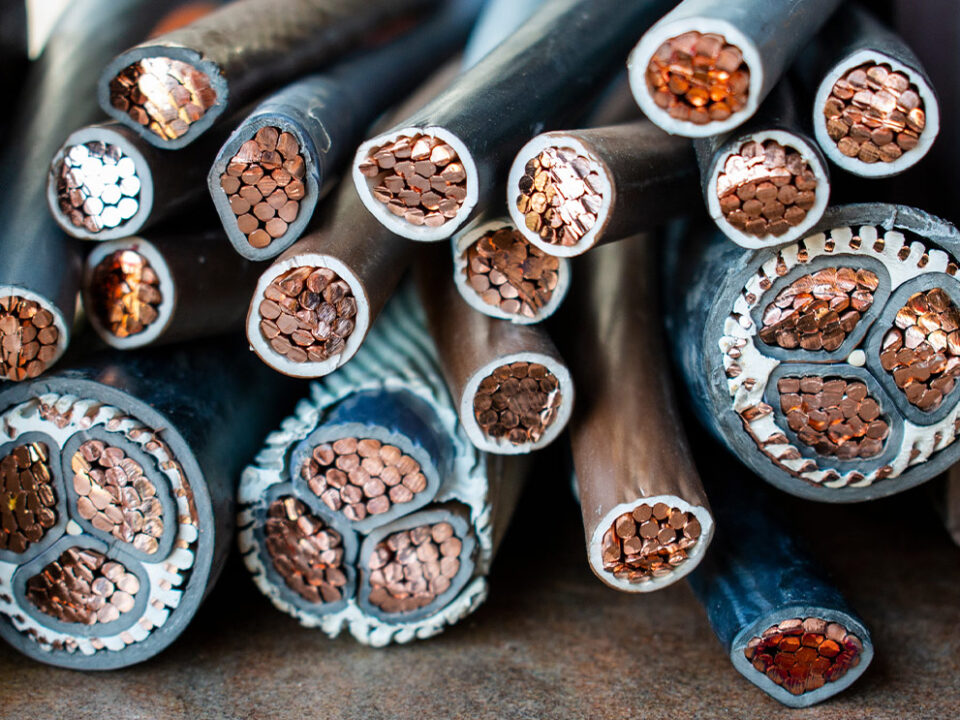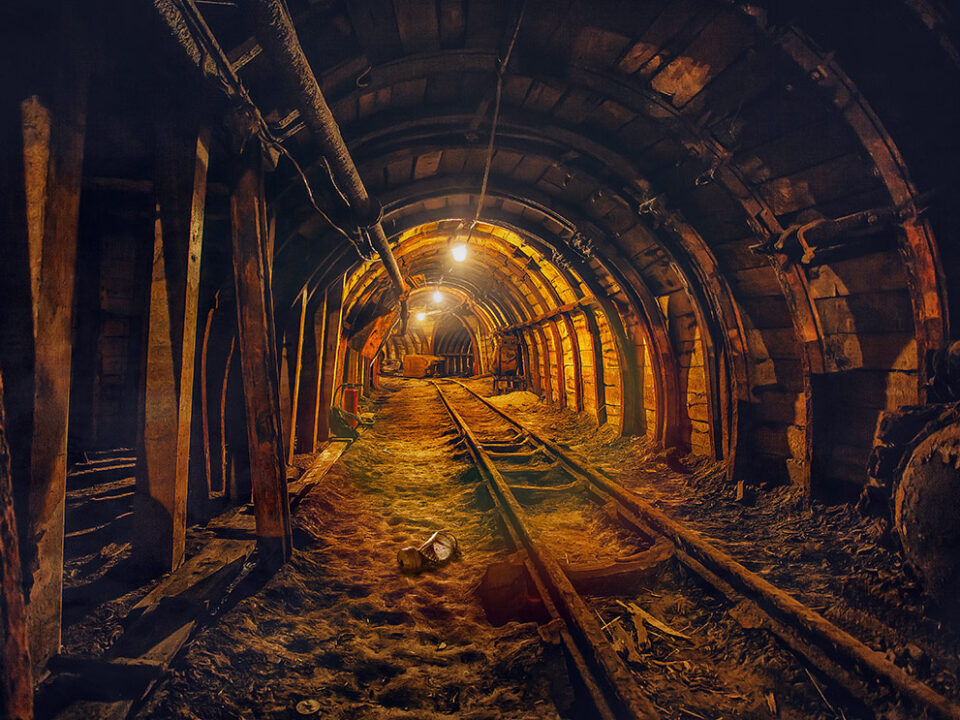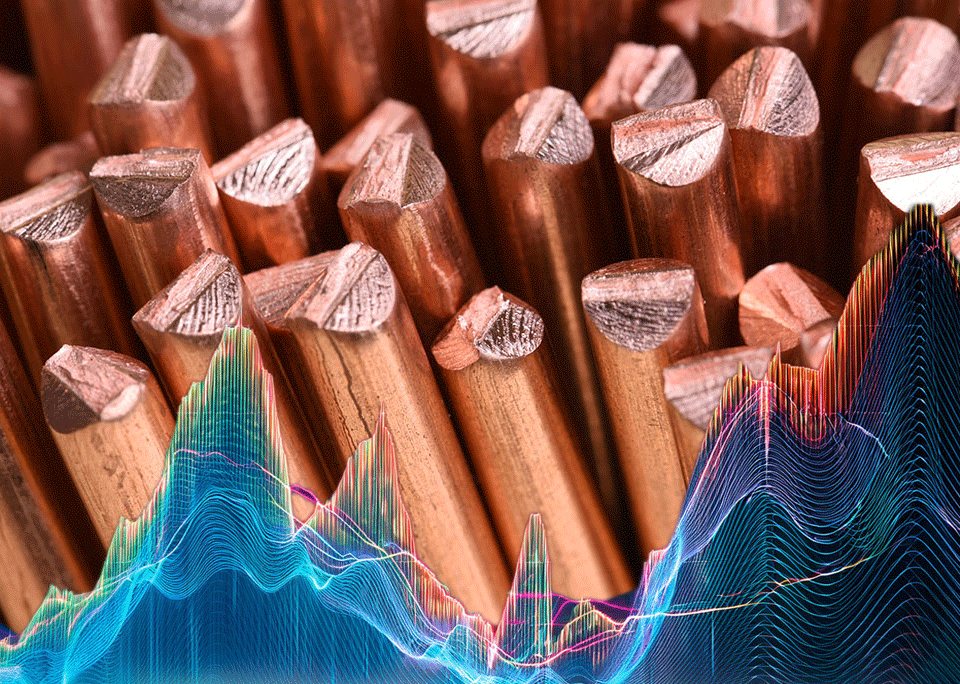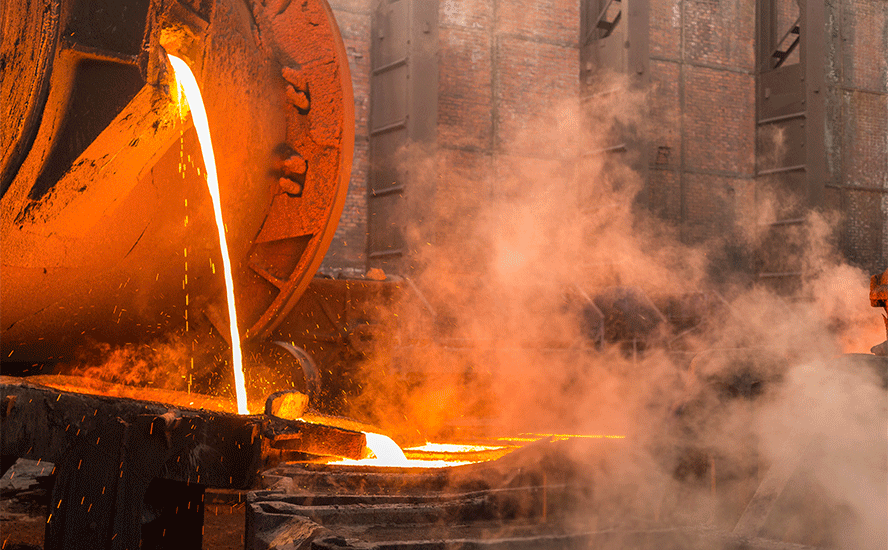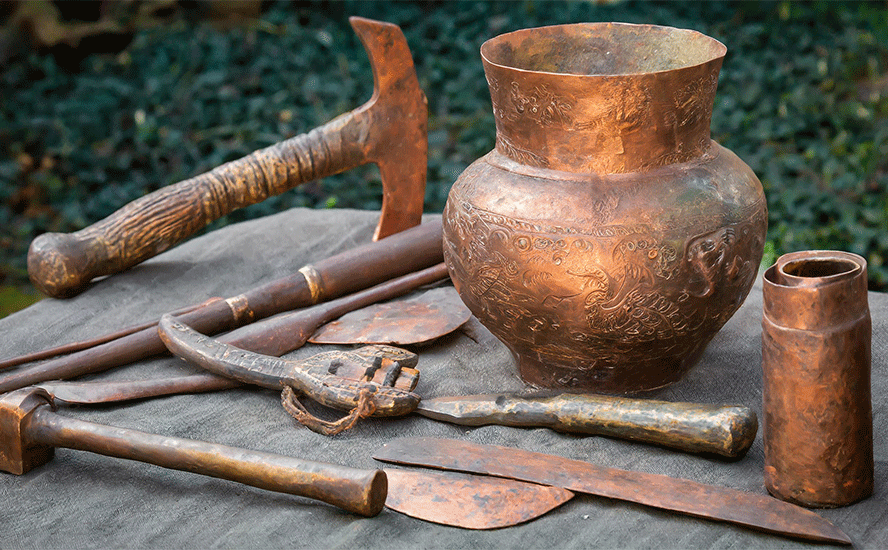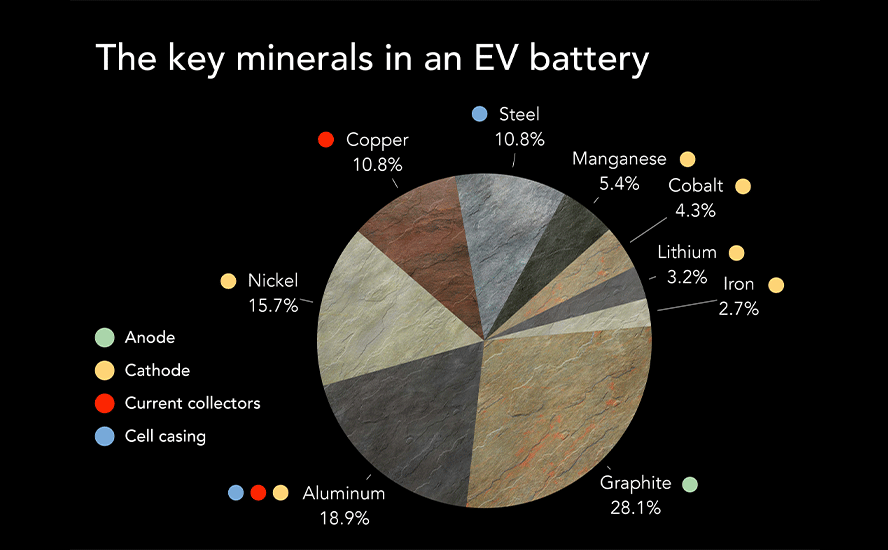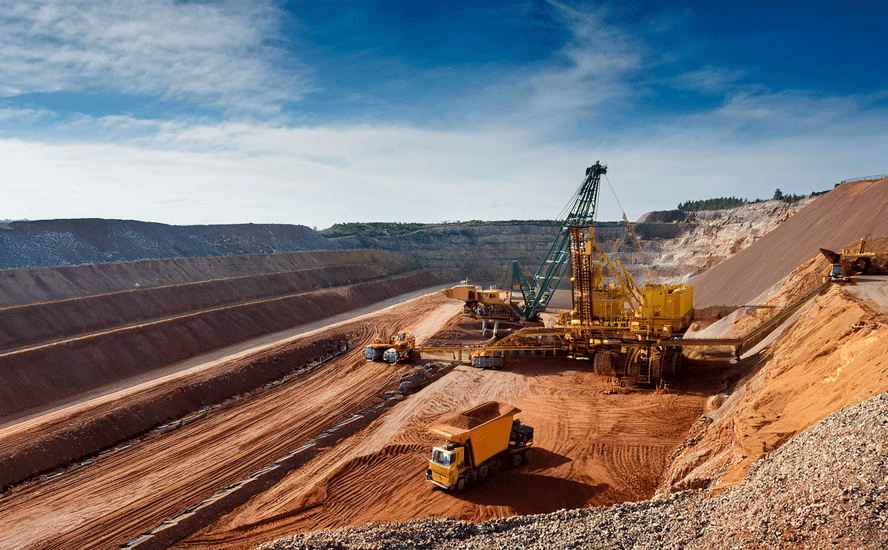Graphite One a technology company that mines graphite receives $37.5 million from US DoD – Richard Mills
2023.07.18
Graphite One (TSXV:GPH, OTCQX:GPHOF) and its Graphite Creek deposit in Alaska have just been given a huge vote of confidence from the United States’ Department of Defense. The company was awarded a DoD technology investment grant of $37.5 million under Title III of the Defense Production Act, funded through the Inflation Reduction Act, passed into law by the Biden administration in June, 2022 to accelerate domestic manufacturing of clean energy.
Investors reacted favorably to the news, with shares in GPH advancing nearly 20% to $1.65/sh, in mid-day trading Monday on the Toronto Venture Exchange — a four-month high.

“Graphite One is honored to receive this award from the Department of Defense, funded by the IRA, and we look forward to advancing our Feasibility Study program,” said Anthony Huston, Graphite One’s founder and CEO, in the July 17 news release. “This Department of Defense grant underscores our confidence in our strategy to build a 100% U.S.-based advanced graphite supply chain – from mining to refining to recycling. The World Bank Group reports that the production of minerals, including graphite, could increase by nearly 500% by 2050, to meet the growing demand for clean energy technologies.”
“This investment to increase domestic capabilities for graphite exemplifies Industrial Base Policy’s commitment to building a resilient industrial base to meet current and future national defense requirements,” said Dr. Laura Taylor-Kale, assistant secretary for Industrial Base Policy with the Department of Defense. “The agreement with Graphite One (Alaska) is in furtherance of the Defense Department’s strategy for minerals and materials related to large-capacity batteries,” Taylor-Kale added.
Industrial Base Policy is the principal advisor to the Under Secretary of Defense for Acquisition and Sustainment for developing Department of Defense policies for the maintenance of the United States defense industrial base, executing small business programs and policy, and conduction geo-economic analysis and assessments.
“Graphite One thanks Assistant Secretary of Defense Taylor-Kale and her DPA Title III team for their support of our proposal, and we look forward to commencing the program,” Huston said.
China’s graphite dominance
China is by far the biggest graphite producer at about 80% of global production. It also controls almost all graphite processing, establishing itself as a dominant player in every stage of the supply chain.
After China, the next leading graphite producers are Mozambique, Brazil, Madagascar, Canada and India. The US currently produces no graphite, and therefore must rely solely on imports to satisfy domestic demand.
According to the US Geological Survey, in 2022 the US imported 82,000 tonnes of natural graphite, of which 77% was flake and high-purity. The top importers were China (33%), Mexico (18%), Canada (17%) and Madagascar (10%).

But taking into account the fact that EV batteries require run-of-mine graphite to go through purification and coating, a process controlled by China, the US was actually not 33% dependent on China for its battery-grade graphite, but 100%. This is a precarious position to be in should the country want to stay in contention for EV dominance.

Defense Production Act
Thankfully, the US government has begun to appreciate the current crisis in graphite and other critical minerals it is import-dependent on.
In 2022 the Biden administration invoked its Cold War powers by including lithium, nickel, cobalt, graphite and manganese on the list of items covered by the 1950 Defense Production Act, previously used by President Harry Truman to make steel for the Korean War.
To bolster domestic production of these minerals, US miners can now gain access to $750 million under the act’s Title III fund, which can be used for current operations, productivity and safety upgrades, and feasibility studies.
Also, Graphite One’s production from Graphite Creek is expected to qualify for tax credits under the US Inflation Reduction Act, because it plans to produce both EV battery anode materials and purified graphite in the United States, as required by the act.
Feasibility study
According to G1, the funding objective of the DoD-Graphite One (Alaska) Technology Investment Agreement is to perform an accelerated feasibility study to modernize and expand domestic production capacity and supply for graphite battery anodes necessary for electronic vehicles and alternative energy batteries, as an essential national defense technology item.
(The total amount covered under the Technology Investment Agreement is $75 million, with the Department of Defense and the company each providing $37.5 million.)
If all goes according to plan, the feasibility study would move Graphite One’s Graphite Creek deposit that much closer to becoming America’s only source of mined graphite, helping to shed its import reliance.
Graphite Creek
Located 35 miles north of Nome, Alaska, Graphite Creek in early 2021 was given High-Priority Infrastructure Project (HPIP) status by the Federal Permitting Improvement Steering Committee (FPISC). The HPIP designation allows Graphite One to list on the US government’s Federal Permitting Dashboard, which ensures that the various federal permitting agencies coordinate their reviews of projects as a means of streamlining the approval process. In other words, having HPIP status means that Graphite Creek will likely be fast-tracked to production.
The US Geological Survey has cited Graphite Creek as the country’s largest known graphite deposit, and one of the biggest in the world.

Once up and running, the mine would produce, on average, 51,813 tonnes of graphite concentrate per year during its projected 23-year mine life. The company itself would produce about 75,000 tonnes of products a year, of which 49,600 tonnes would be anode materials, 7,400 tonnes purified graphite products and 18,000 tonnes unpurified graphite products.
A prefeasibility study released last fall is based on the exploration of only one square kilometer of the 16-km deposit, meaning that it could easily crank up production by a factor several times the current (proposed) run rate of 2,860 tonnes per day. Drill results indicate the resource remains open down dip and along strike to the east and west.

Results of 2022 drilling (1,940m) were released by Graphite One earlier this year, confirming that “significant graphite grade” continues 4 kilometers from the pit boundary defined in the 2022 prefeasibility study (PFS). One step-out hole showed significant intervals above mill cut-off grade, with selected intervals totalling 8.2m of 4.18% Cg (graphitic carbon).
Based on these results, the company then put out an updated resource estimate for Graphite Creek, which showed an increase of 15.5% in measured and indicated tonnage with a corresponding increase of 13.1% in contained tonnes of graphite over the 2022 PFS (see below).

The deposit now has 37.6 million tonnes of M+I resources grading 5.14% Cg, for 1.93 million tonnes of contained natural graphite. It also has 243.7 million tonnes of inferred resources at 5.07% Cg, for 12.3 million tonnes of natural graphite.
Circular economy
Anchored by this resource, Graphite One aims to become the first vertically integrated domestic producer of natural graphite to serve the nascent US electric vehicle battery market.
To do that, the company entered an MOU in 2022 with Sunrise New Energy Material Company, a China-based lithium-ion battery anode producer. The intent is to develop an agreement to share expertise and technology for the design, construction and operation of a proposed graphite material manufacturing facility in Washington State.
The Washington facility represents the second link in Graphite One’s advanced graphite materials supply chain. A recycling facility to reclaim graphite and other battery materials is also being planned, to be co-located at the Washington plant, completing the third link.
Following the MOU, Sunrise subsequently started preparing anode materials for sample purposes from Graphite Creek concentrate, and in December, it was revealed that the concentrate is being used to prepare sample battery anode materials for two major electric vehicle manufacturers, while an artificial graphite anode sample is being prepared for a third EV company.
Earlier this year, Graphite One announced it had received the active anode material samples produced by Sunrise. These samples, along with specification data, were then provided to PNNL, the U.S. Department of Energy lab with which it has a material transfer agreement, for additional testing. They were also sent to a leading EV manufacturer for evaluation.

Government support
Graphite One has the support of high-ranking US politicians, including Alaska Governor Mike Dunleavy, Alaska Senator Lisa Murkowski, junior Alaska Senator Dan Sulllivan, and Congresswoman Mary Peltola.
“All of us at Graphite One want to express our thanks for the strong support we’ve received from public officials whose mission it is to advance Alaska’s and America’s best interests,” Huston said in Monday’s news release.
“Senator Lisa Murkowski, the thought leader in Congress on critical minerals policy from her position on the Senate Energy and Natural Resources Committee — and an early advocate of designating graphite and the other battery materials as Defense Production Act Title III materials; Senator Dan Sullivan, the driving force behind a U.S. Arctic Strategy from his position on the Senate Armed Services Committee with his past service as Alaska’s Director of the Department of Natural Resources; Congresswoman Mary Peltola, member of the House Natural Resources Committee and a strong proponent of domestic resource development; and of course the late Don Young, Dean of the House and from the very first, a strong supporter of our project. At the state level, Graphite One thanks Governor Mike Dunleavy for nominating us as a High-Priority Infrastructure Project, and for his commitment to making Alaska a leader in critical minerals development.”
“We also want to thank President Biden and his White House staff for the decision to designate graphite and the battery materials as DPA Title III materials, underscoring their importance for the national economy and national security.”
During a July 11 Senate session, Sen. Lisa Murkowski spoke in support of G1 and its Graphite Creek deposit — having just returned from a site visit where she is seen holding a core sample from recent drilling.
“I’ve always supported Graphite One and what they’re doing in Alaska, but really after my site visit there on Saturday, I’m convinced that this is a project that every one of us, those of us here in the Congress, the Biden Administration, all of us needs to support,” Murkowski said in a July 13 news release. She added:
“Graphite One’s vision is to build a complete domestic supply chain for natural graphite. Their project would be anchored by responsible mining of the Graphite Creek deposit producing tens of thousands of metric tons a year, but it would also extend to a battery anode manufacturing facility in Washington State which would be co-located with a battery recycling plant, which is why their CEO Anthony Huston often describes Graphite One as a technology company that mines graphite. This, Mr. President, is a major opportunity for us.”


In the news release, Huston stated:
“Senator Murkowski has been a key supporter of Graphite One as we aim to develop a 100 per cent U.S.-based graphite supply chain. She is a very large proponent of clean energy, and responsible development of resources to encourage economic growth in United States. We are honored to have her support and will continue to drive forward with our ambition to develop the United States’ first graphite mine and supply chain solution”.
Graphite supply and demand
With electric vehicles gaining popularity in recent years, the world’s consumption of graphite has skyrocketed. According to the USGS, the battery end-use market for graphite has grown by 250% since 2018.
According to the World Bank, graphite accounts for 53.8% of the mineral demand in batteries, the most of any. Lithium, despite being a staple across all batteries, accounts for only 4% of total demand.
BloombergNEF forecasts graphite demand to quadruple by 2030 on the back of an EV battery boom. The International Energy Agency (IEA) goes 10 years further out, predicting that graphite demand could see an 8- to 25-fold increase between 2020-2040, trailing only lithium in demand growth upside.
Global carmakers and established battery manufacturers have announced plans to invest at least $50 billion into at least 10 states to build EV assembly and battery plants since the start of 2021, and states have made commitments totaling at least $10.8 billion to lure those investments, according to a 2022 Bloomberg piece.
Remember, this is only for the United States. Other countries wanting to build electric vehicles will have to find the money to build battery plants and figure out how they are going to get the graphite and other battery raw materials required.
The Department of Energy last October awarded $2.8 billion in grants to 20 manufacturing and processing companies for projects across 12 states.
The funding came from the $1-trillion bipartisan infrastructure law passed in 2021 and will include components affecting both the electric grid and electric vehicles.
The Biden administration’s plan is to have 50% of US auto production be electric and hybrid by 2030.

According to the Department of Energy, a wave of new planned EV battery plants will increase North America’s battery manufacturing capacity nearly 20 times, from 55 gigawatt-hours per year in 2021 to nearly 1,000 GWh/year by 2030. Most of the announced projects are scheduled to begin production between 2025 and 2030. That year, production capacity will be capable of supporting the manufacture of roughly 10 to 13 million all-electric vehicles per year.

It’s thought that battery demand could gobble up well over 1.6 million tonnes of natural graphite output per year. However, this figure will likely grow each year as expected, posing a serious threat to the global supply chain as the material is already used in a variety of industries.
For context, the 2022 mine supply was about 1.3 million tonnes, which means we’re very close to entering, if not already, a period of deficits.
Benchmark Mineral Intelligence projects that natural graphite will have the largest supply shortfalls of all battery materials by 2030, with demand outstripping expected supplies by about 1.2 million tonnes.
And this is counting EV battery use only; the mining industry still needs to supply other end-users. The automotive and steel industries remain the largest consumers of graphite today, with demand across both rising at 5% per annum.
Benchmark Mineral Intelligence has said as many as 97 average-sized graphite mines need to come online by 2035 to meet global demand. That’s about eight new mines a year, which at first may seem doable but considering the number of graphite projects worldwide and the time it takes to develop them into mines, we’re really up against it.
Conclusion
I see Graphite One taking a leading role in loosening China’s tight grip on the US graphite market by mining feedstock from its Graphite Creek mine in Alaska and shipping it to Washington State to manufacture lithium battery anodes (and other graphite products).
Indeed the company could supply a major portion of North America’s graphite demand.
G1 continues to make substantial progress on Graphite Creek, first releasing a prefeasibility study, then a new resource estimate, has sent sample battery anode materials to major electric vehicle manufacturers, and now is onto the next step, a feasibility study.
The U.S. Department of Defense has come through with a huge grant, $37.5 million, and in doing so, is matching an equivalent level of expenditure from Graphite One.
If all goes according to plan, the feasibility study would advance the Graphite Creek deposit that much closer to becoming America’s only source of mined graphite, helping to shed its import reliance.
The US government appears to be in a giving mood when it comes to electric vehicles, battery plants and critical minerals like graphite. The Department of Energy last year awarded nearly $3 billion in grants to manufacturing/ processing companies for projects across 12 states.
Arguably, the DoD’s $37.5 million grant is just the first of a number of government funding announcements still to come, all designed to move Graphite One’s project — the mine, manufacturing facility and recycling plant — forward. And why not? Politicians clearly see an investment to increase domestic capabilities for graphite as money well spent.
Graphite One Inc.
TSXV:GPH, OTCQX:GPHOF
Cdn$1.57, 2023.07.17
Shares Outstanding: 121.1m
Market cap: Cdn$197.5m
GPH website
Richard (Rick) Mills
aheadoftheherd.com
subscribe to my free newsletter
Legal Notice / Disclaimer
Ahead of the Herd newsletter, aheadoftheherd.com, hereafter known as AOTH.
Please read the entire Disclaimer carefully before you use this website or read the newsletter. If you do not agree to all the AOTH/Richard Mills Disclaimer, do not access/read this website/newsletter/article, or any of its pages. By reading/using this AOTH/Richard Mills website/newsletter/article, and whether you actually read this Disclaimer, you are deemed to have accepted it.
Any AOTH/Richard Mills document is not, and should not be, construed as an offer to sell or the solicitation of an offer to purchase or subscribe for any investment.
AOTH/Richard Mills has based this document on information obtained from sources he believes to be reliable, but which has not been independently verified.
AOTH/Richard Mills makes no guarantee, representation or warranty and accepts no responsibility or liability as to its accuracy or completeness.
Expressions of opinion are those of AOTH/Richard Mills only and are subject to change without notice.
AOTH/Richard Mills assumes no warranty, liability or guarantee for the current relevance, correctness or completeness of any information provided within this Report and will not be held liable for the consequence of reliance upon any opinion or statement contained herein or any omission.
Furthermore, AOTH/Richard Mills assumes no liability for any direct or indirect loss or damage for lost profit, which you may incur as a result of the use and existence of the information provided within this AOTH/Richard Mills Report.
You agree that by reading AOTH/Richard Mills articles, you are acting at your OWN RISK. In no event should AOTH/Richard Mills liable for any direct or indirect trading losses caused by any information contained in AOTH/Richard Mills articles. Information in AOTH/Richard Mills articles is not an offer to sell or a solicitation of an offer to buy any security. AOTH/Richard Mills is not suggesting the transacting of any financial instruments.
Our publications are not a recommendation to buy or sell a security – no information posted on this site is to be considered investment advice or a recommendation to do anything involving finance or money aside from performing your own due diligence and consulting with your personal registered broker/financial advisor.
AOTH/Richard Mills recommends that before investing in any securities, you consult with a professional financial planner or advisor, and that you should conduct a complete and independent investigation before investing in any security after prudent consideration of all pertinent risks. Ahead of the Herd is not a registered broker, dealer, analyst, or advisor. We hold no investment licenses and may not sell, offer to sell, or offer to buy any security.
Richard owns shares of Graphite One Inc. (TSXV:GPH). GPH is a paid advertiser on his site aheadoftheherd.com
This article is issued on behalf of GPH
Legal Notice / Disclaimer
Ahead of the Herd newsletter, aheadoftheherd.com, hereafter known as AOTH.Please read the entire Disclaimer carefully before you use this website or read the newsletter. If you do not agree to all the AOTH/Richard Mills Disclaimer, do not access/read this website/newsletter/article, or any of its pages. By reading/using this AOTH/Richard Mills website/newsletter/article, and whether you actually read this Disclaimer, you are deemed to have accepted it.



